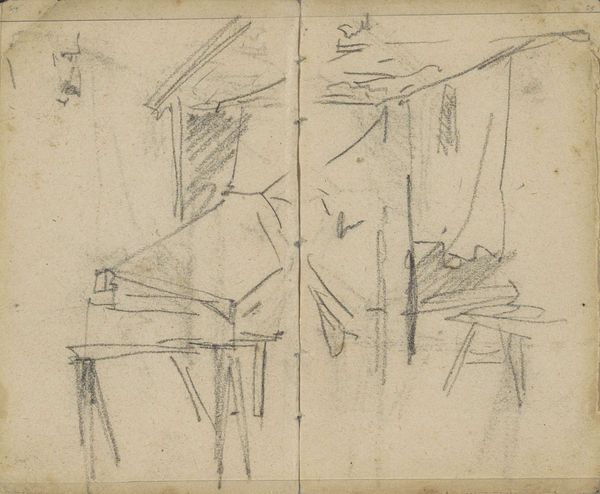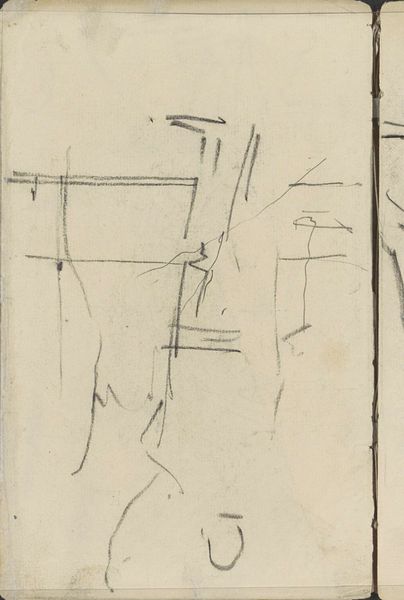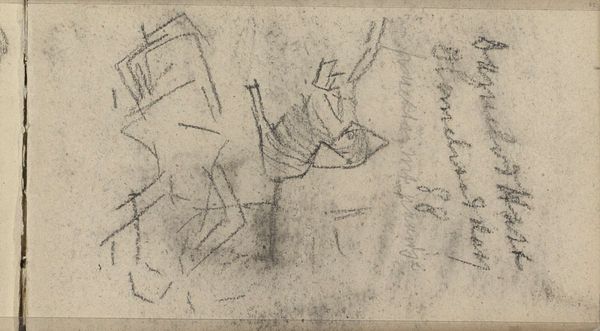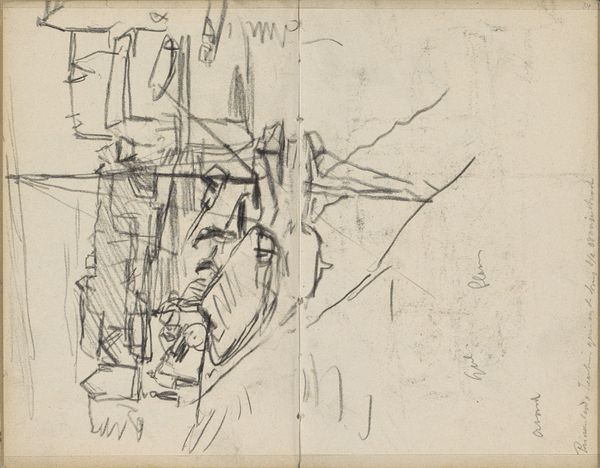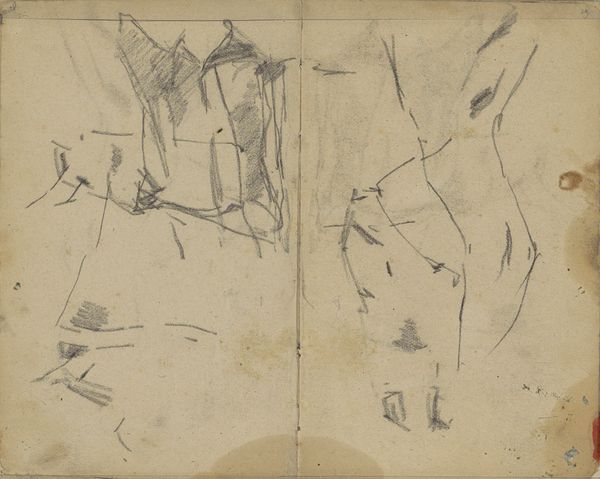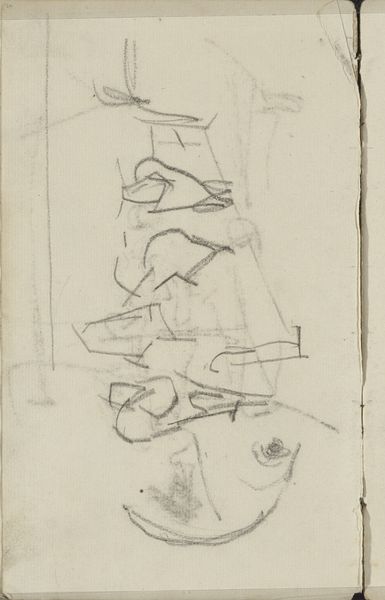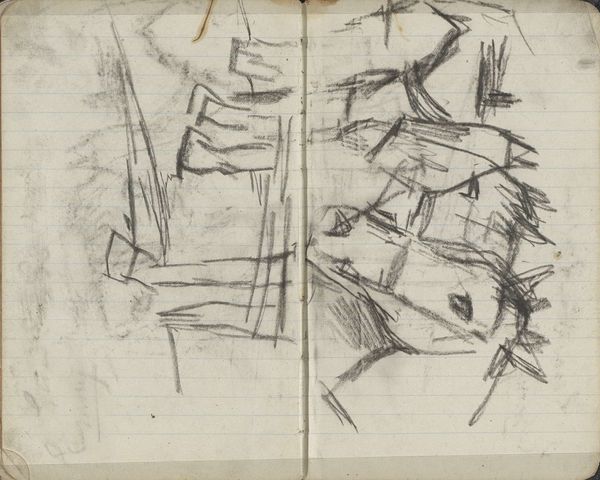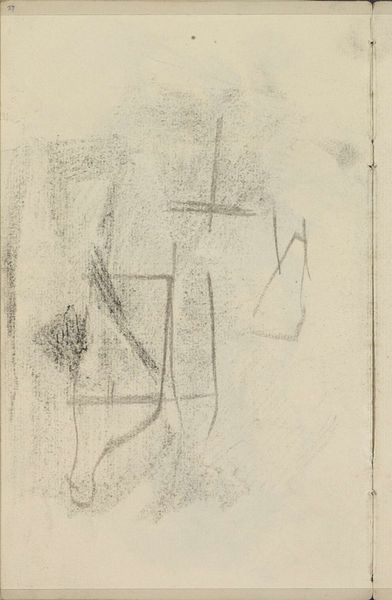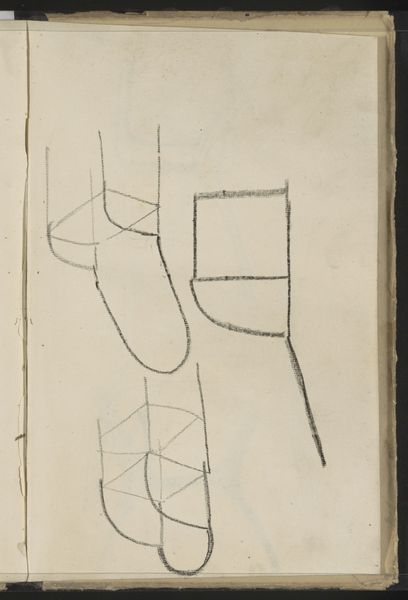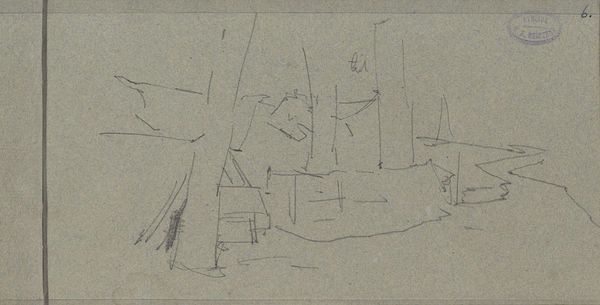
drawing, graphite
#
drawing
#
amateur sketch
#
light pencil work
#
impressionism
#
incomplete sketchy
#
hand drawn type
#
personal sketchbook
#
ink drawing experimentation
#
pen-ink sketch
#
abstraction
#
line
#
graphite
#
sketchbook drawing
#
sketchbook art
#
initial sketch
Copyright: Rijks Museum: Open Domain
Editor: So here we have "Studie," a graphite and ink drawing from around 1886 to 1890 by George Hendrik Breitner, currently at the Rijksmuseum. It has a certain raw, experimental energy. What do you see in this piece that might be easily overlooked? Curator: Immediately, I'm drawn to the evident process. We're looking at raw materials here – graphite and ink on paper, yes – but consider also Breitner's labor. The swift, almost frantic application of line. It wasn’t made for formal display but more a way of processing visual information that reflects the quickly changing urban environment Breitner captured in Amsterdam. How does the rapid urbanization around him influence Breitner’s rapid strokes, would you say? Editor: It does make me wonder how the materials themselves may have even dictated his style, given the immediacy that the lines give off. A quick drawing for a quick city. So, are you suggesting the work itself sort of rejects the more rigid academic art standards of the time by embracing an almost journalistic ethos, like sketches from the front lines of modernity? Curator: Precisely! By valuing the sketch – the immediate record of a fleeting moment – Breitner challenges the very definition of "art." Instead of a finished "masterpiece" destined for a wealthy patron's collection, this is work, akin to that of the working classes, laboring constantly with an intrinsic material value. This also brings forward ideas and styles from avant-garde, pushing fine art to reevaluate their creative values. How does seeing it this way change your understanding? Editor: I hadn't really thought about it like that before, as a statement of value through process and the artmaking’s democratization! Curator: Indeed. We are encouraged to view these kinds of work and others within his impressionist contemporaries with greater focus on his environment and societal perspective than pure, idealized visual creation. Editor: Thanks; I appreciate your breaking down the layers behind the simple-looking sketch, to discover complex commentaries on the societal aspects within it. It really makes you rethink our understanding of this type of work!
Comments
No comments
Be the first to comment and join the conversation on the ultimate creative platform.
